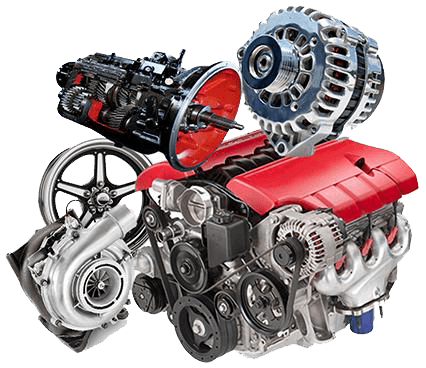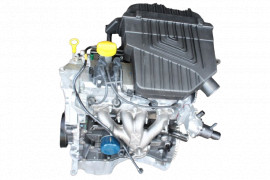Opel Corsa Engine: Whatever You Required to Know Prior To Buying
Opel Corsa Engine: Whatever You Required to Know Prior To Buying
Blog Article
Discovering the Inner Functions of a Compact Automobile's Engine System
As motorists, we usually take for provided the complex procedures that occur within the confines of our automobile's engine system. In this exploration of a small lorry's engine system, we will unwind the inner functions of this mechanical harmony, shedding light on the secrets that drive us onward on our daily trips.
Combustion Refine Summary
The burning procedure in a compact car's engine system is a vital device that efficiently transforms gas into energy to power the car. This procedure takes place within the combustion chamber of the engine, where fuel and air mix, stir up, and generate controlled explosions. The burning procedure includes four main phases: intake, compression, exhaust, and power.
During the consumption stage, the piston relocates downward, attracting a combination of air and gas into the burning chamber. The next phase, compression, involves the piston relocating upward, pressing the air-fuel mixture to raise its strength. Ultimately, in the power stage, the trigger plug fires up the pressed mix, causing a fast expansion of gases that requires the piston pull back. This downward activity generates the power needed to drive the lorry. Finally, in the exhaust phase, the burned gases are removed from the burning chamber through the exhaust valve, preparing the chamber for the following cycle. This cyclic combustion process is basic to the operation of a compact automobile's engine system, ensuring effective power conversion for propulsion.
Piston and Cyndrical Tube Communication

The piston's precise fit within the cylinder is important for preserving ideal compression and avoiding energy loss during combustion. Tight clearances between the piston and cylinder walls ensure efficient securing, permitting the piston to relocate efficiently without enabling gases to leak past. Proper lubrication is likewise vital to lower rubbing and put on in between these parts, improving long life and efficiency.
Additionally, the design and products made use of in producing the piston and cylinder impact engine performance and resilience. Modern engines frequently employ light-weight yet long lasting materials like aluminum alloys for pistons and cyndrical tube liners to lower inertia and boost thermal effectiveness. Overall, the unified communication between the piston and cyndrical tube is essential to the engine's functionality and total efficiency.
Fuel Injection System Capability
Fuel shot systems in small vehicle engines play a critical duty in precisely supplying fuel to the burning chamber for controlled and reliable ignition. The fuel shot system operates by injecting fuel right into the combustion chamber at the optimal moment throughout the engine's operation (opel corsa engine). This specific timing makes sure that the gas blends evenly with the air for appropriate burning, resulting in boosted fuel performance and reduced discharges
There are largely two sorts of fuel injection systems made use of in compact automobile engines: port gas injection (PFI) and direct gas shot click this link (DFI) PFI systems inject fuel right into the consumption port before the intake shutoff, while DFI systems infuse gas straight into the combustion chamber. Both systems have their benefits, with DFI providing far better fuel atomization and PFI giving a more economical solution.
Comprehending Engine Air Conditioning Devices
Effective operation of a compact vehicle's engine counts greatly on the efficiency of its cooling mechanisms. The air conditioning system in a small car normally consists of several parts functioning together to regulate the engine temperature level. Comprehending these engine cooling devices is crucial for preserving the performance and long life of a small vehicle's engine system.

Exhaust System Components Explained
The optimum performance of a small car's engine cooling devices depends upon a complementary system known as the exhaust system, which consists of numerous necessary parts for making certain efficient discharges and engine performance. The exhaust system includes elements such as the exhaust manifold, catalytic converter, muffler, and tailpipe. The exhaust manifold collects exhaust gases from the engine's cyndrical tubes and paths them to the catalytic converter. The catalytic converter after that converts harmful contaminants in the exhaust into much less harmful exhausts before releasing them via the muffler and tailpipe.
One essential part of the exhaust system is the oxygen sensing unit, which keeps an eye on the oxygen degrees in the exhaust gases to help control gas intake and make sure ideal engine efficiency. opel corsa engine. Furthermore, the resonator might be present in some exhaust systems to decrease sound levels. Generally, the exhaust system plays a crucial duty in maintaining engine effectiveness, lowering hazardous discharges, and making certain a quieter driving experience for portable vehicle owners

Final Thought
In verdict, the portable car's engine system is an try this website intricate mix of components that collaborate to facilitate the combustion process, transform gas right into power, and remove waste gases. Comprehending the inner functions of the engine system, consisting of the piston and cyndrical tube communication, gas shot system, engine air conditioning devices, and exhaust system parts, is crucial for maintaining optimal performance and efficiency of the lorry.
The burning procedure in a portable lorry's engine system is a vital system that effectively transforms fuel into power to power the vehicle.Fuel injection systems in small car engines play an important function in exactly providing fuel to the burning chamber for regulated and effective ignition.There are mainly two types of gas shot systems utilized in small car engines: port fuel injection (PFI) and straight gas injection (DFI) Comprehending these engine cooling devices is essential for keeping the efficiency and durability of a small Learn More automobile's engine system.
The ideal functioning of a compact lorry's engine air conditioning systems depends on a complementary system known as the exhaust system, which consists of numerous essential parts for making certain effective discharges and engine efficiency.
Report this page